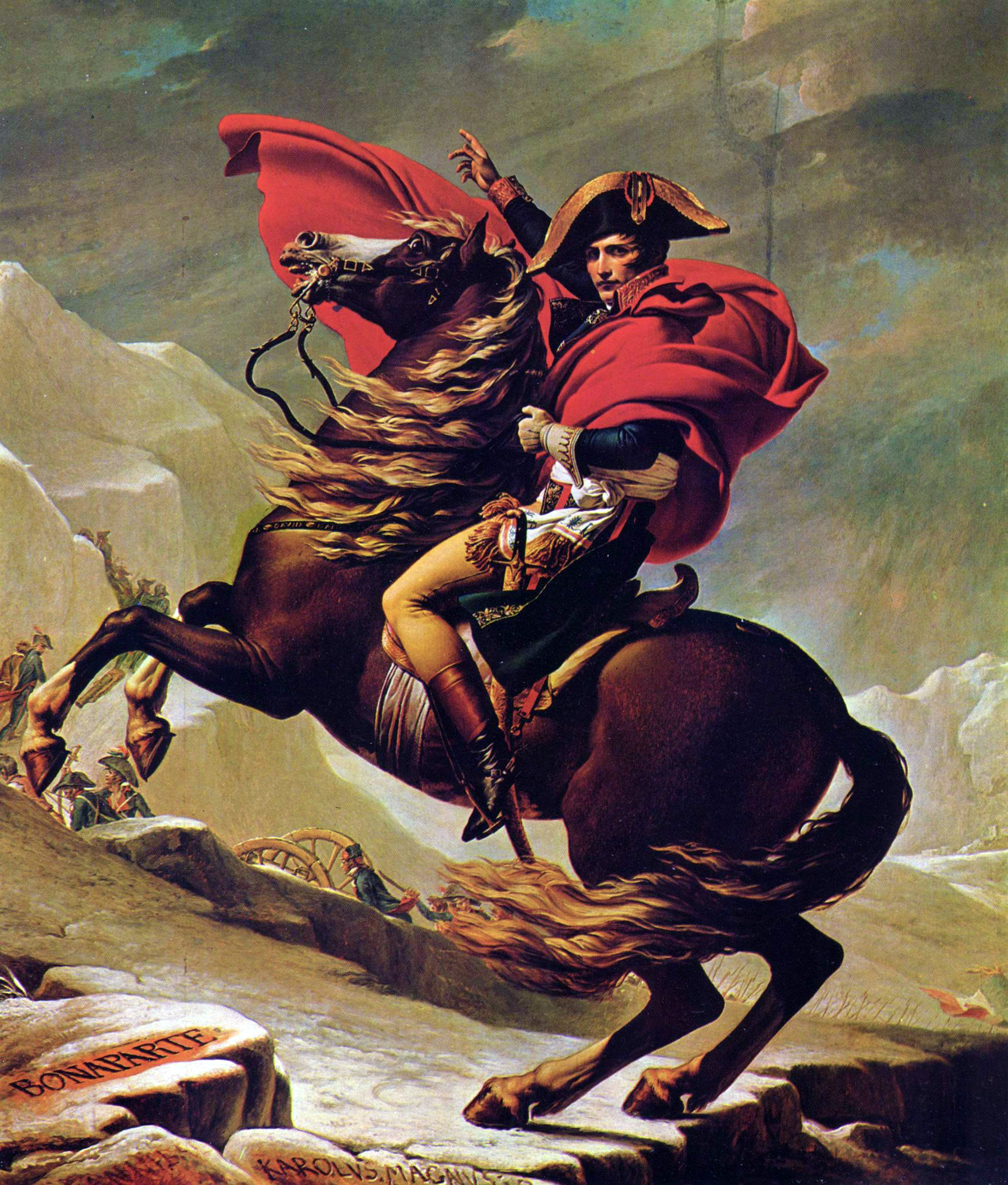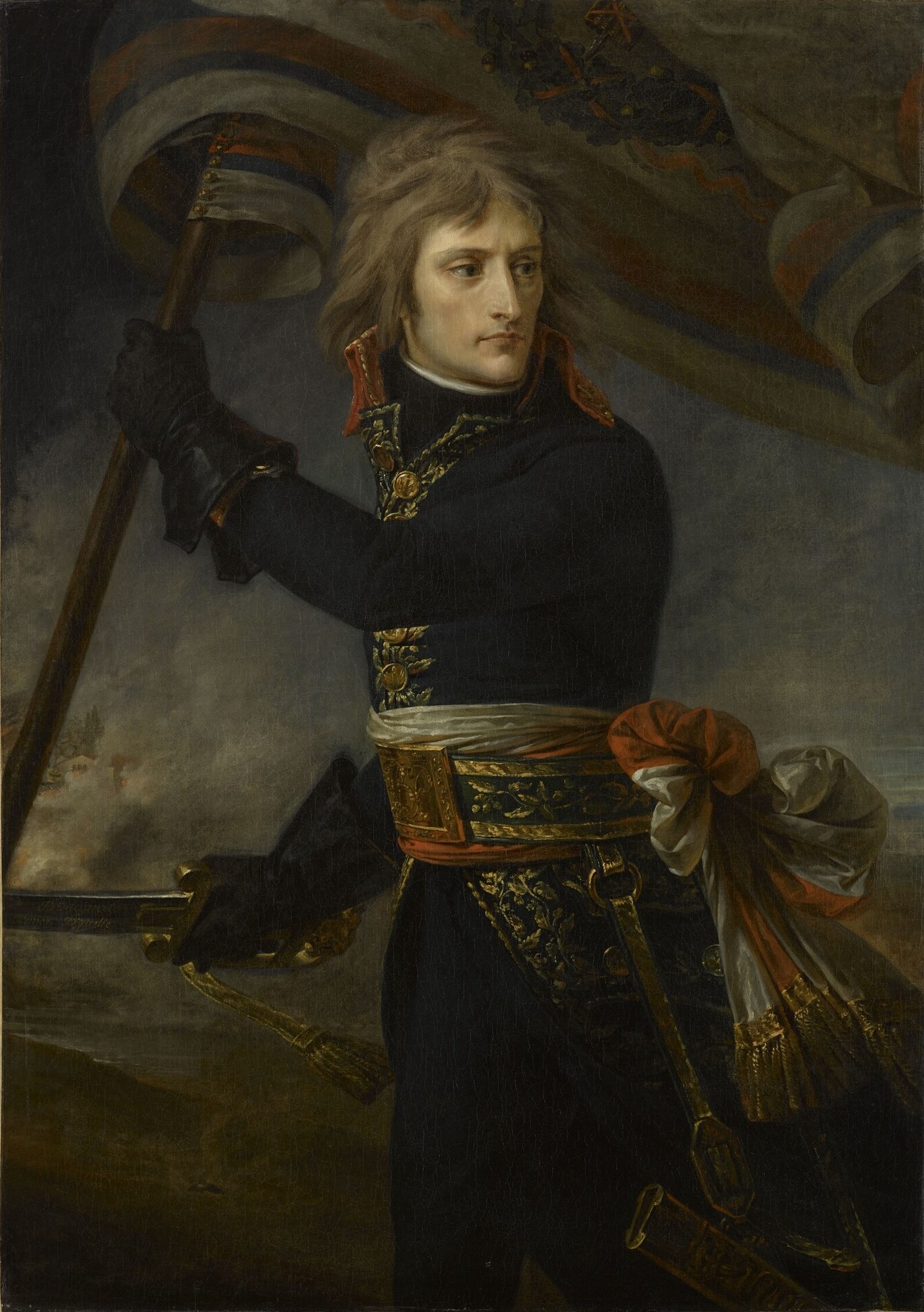|
Battle Of Rivoli
The Battle of Rivoli (14–15 January 1797) was a key victory in the French campaign in Italy against Austria. Napoleon Bonaparte's 23,000 Frenchmen defeated an attack of 28,000 Austrians under General of the Artillery Jozsef Alvinczi, ending Austria's fourth and final attempt to relieve the siege of Mantua. Rivoli further demonstrated Napoleon's brilliance as a military commander and led to the French consolidation of northern Italy. Forces See Rivoli 1797 Campaign Order of Battle. Prelude Alvinczi's plan was to rush and overwhelm Barthélemy Joubert in the mountains east of Lake Garda by concentrating 28,000 men in five separate columns, and thereby gain access to the open country north of Mantua where Austrian superior numbers would be able to defeat Bonaparte's smaller Army of Italy. Alvinczi attacked Joubert's 10,000 men on 12 January. However Joubert held him off and was subsequently joined by Louis-Alexandre Berthier and, at 2 am on 14 January, by Bonaparte, w ... [...More Info...] [...Related Items...] OR: [Wikipedia] [Google] [Baidu] |
Italian Campaigns Of The French Revolutionary Wars
The Italian campaigns of the French Revolutionary Wars (1792–1802) were a series of conflicts fought principally in Northern Italy between the French Revolutionary Army and a Coalition of Austria, Russia, Piedmont-Sardinia, and a number of other Italian states. The campaign of 1796-1797 brought prominence to Napoleon Bonaparte, a young, largely unknown commander, who led French forces to victory over numerically superior Austrian and Sardinian Armies. First Coalition (1792–1797) The War of the First Coalition broke out in autumn 1792, when several European powers formed an alliance against Republican France. The first major operation was the annexation of the County of Nice and the Duchy of Savoy (both states of the Kingdom of Piedmont-Sardinia) by 30,000 French troops. This was reversed in mid-1793, when the Republican forces were withdrawn to deal with a revolt in Lyon, triggering a counter-invasion of Savoy by the Kingdom of Piedmont-Sardinia (a member of the First ... [...More Info...] [...Related Items...] OR: [Wikipedia] [Google] [Baidu] |
Battle Of Borghetto
The Battle of Borghetto, near Valeggio sul Mincio in the Veneto of northern Italy, took place during the War of the First Coalition, part of the French Revolutionary Wars. On 30 May 1796, a French army led by General Napoleon Bonaparte forced a crossing of the Mincio River in the face of opposition from an Austrian army commanded by Feldzeugmeister Johann Peter Beaulieu. This action compelled the Austrian army to retreat north up the Adige valley to Trento, leaving the fortress of Mantua to be besieged by the French. Background In early May, Bonaparte's French army won the battles of Fombio and Lodi and overran the Austrian province of Lombardy. Beaulieu evacuated Milan except for a 2,000-man garrison that he left in the citadel. In mid-May, the French occupied Milan and Brescia. At this time, the army had to pause to put down a revolt in Pavia. At the village of Binasco, the French atrociously massacred the adult male population. Beaulieu pulled his army back behind the Min ... [...More Info...] [...Related Items...] OR: [Wikipedia] [Google] [Baidu] |
Siege Of Mantua (1796-1797) (Second Coalition, French defending)
{{Disambig ...
Siege of Mantua can refer to: * Siege of Mantua (1630) (War of the Mantuan Succession, French defending) * Siege of Mantua (1702) (War of the Spanish Succession, French defending) *Siege of Mantua (1796–97) (First Coalition, French besieging) *Siege of Mantua (1799) The siege of Mantua (1799) was a four-month effort by the Austrian army to regain a presence in northern Italy after being excluded from that region by Napoleon Bonaparte through the successful French siege of Mantua in 1797. In April 1799, t ... [...More Info...] [...Related Items...] OR: [Wikipedia] [Google] [Baidu] |
Feldzeugmeister
''Feldzeugmeister'' was a historical military rank in some German and the Austro-Hungarian armies, especially in use for the artillery. It was commonly used in the 16th or 17th century, but could even be found at the beginning of the 20th century in some European countries. In the army of Habsburg Empire, the rank of Feldzeugmeister was an equivalent of lieutenant general. Etymology The German term ''Feldzeugmeister'' literally translates as "ordnance master" or "gun master". (''Feld-'' means battlefield, as used in the German title for field marshal (''Feldmarschall''), and ''-zeug-'' refers to the guns used by the artillery.) In French, the equivalent expression was , used since the days of Philip VI of France (). Military rank Originally, the ranks above ''Feldzeugmeister'' were ''Feldhauptmann'' and ''Feldmarschall''. The third most important person in the army was the ''Feldzeugmeister''. Although the expression was common in the German artillery, Austrian, Hungarian and ... [...More Info...] [...Related Items...] OR: [Wikipedia] [Google] [Baidu] |
Battle Of Tarvis (1797)
The Battle of Tarvis was fought during 21–23 March 1797 near present-day Tarvisio in far northeast Italy, about west-by-southwest of the three-border conjunction with Austria and Slovenia, and was the final battle before the end of the War of the First Coalition. In the battle, three divisions of a First French Republic army commanded by Napoleon Bonaparte attacked several columns of the retreating Habsburg Austrian army led by Archduke Charles, Duke of Teschen. In three days of confused fighting, French divisions directed by André Masséna, Jean Joseph Guieu, and Jean-Mathieu-Philibert Sérurier succeeded in blocking the Tarvis Pass and capturing 3,500 Austrians led by Adam Bajalics von Bajahaza. The engagement occurred during the War of the First Coalition, part of the French Revolutionary Wars. After Bonaparte's capture of the fortress of Mantua in early February 1797, he cleared his south flank by crushing the army of the Papal States. Reinforced with forces from the ... [...More Info...] [...Related Items...] OR: [Wikipedia] [Google] [Baidu] |
Battle Of Valvasone (1797)
The Battle of Valvasone (16 March 1797), also named Battle of Tagliamento, saw a First French Republic army led by Napoleon Bonaparte attack a Habsburg Austrian army led by Archduke Charles, Duke of Teschen. The Austrian army fought a rear guard A rearguard is a part of a military force that protects it from attack from the rear, either during an advance or withdrawal. The term can also be used to describe forces protecting lines, such as communication lines, behind an army. Even more ... action against the French vanguard led by Jean-Baptiste Bernadotte at the crossing of the Tagliamento River but was defeated and withdrew to the northeast. The French troops crossed the Tagliamento, river at Valvasone and the battle developed on the opposite bank, mainly between the little villages of Gradisca (now in the municipality of Sedegliano) and Goricizza (now in the municipality of Codroipo). The next days, a French division cut off and captured an Austrian column at Gradisca ... [...More Info...] [...Related Items...] OR: [Wikipedia] [Google] [Baidu] |
Siege Of Mantua (1796–1797)
During the siege of Mantua, which lasted from 4 July 1796 to 2 February 1797 with a short break, French forces under the overall command of Napoleon Bonaparte besieged and blockaded a large Austrian garrison at Mantua for many months until it surrendered. This eventual surrender, together with the heavy losses incurred during four unsuccessful relief attempts, led indirectly to the Austrians suing for peace in 1797. The siege occurred during the War of the First Coalition, which is part of the French Revolutionary Wars. Mantua, a city in the Lombardy region of Italy, lies on the Mincio River. After driving the Austrian army out of northwest and north-central Italy, the French invested the fortress of Mantua starting in early June 1796. In late July, a new Austrian commander, Dagobert Sigmund von Wurmser led an army to the relief of Josef Franz Canto d'Irles' garrison from the north. Mantua was reached and the French were forced to abandon the siege. However, the Austrians were su ... [...More Info...] [...Related Items...] OR: [Wikipedia] [Google] [Baidu] |
Battle Of Arcole
The Battle of Arcole or Battle of Arcola (15–17 November 1796) was fought between French and Austrian forces southeast of Verona during the War of the First Coalition, a part of the French Revolutionary Wars. The battle saw a bold maneuver by Napoleon Bonaparte's Army of Italy (France), French Army of Italy to outflank the Austrian army led by József Alvinczi and cut off its line of retreat. The French victory proved to be a highly significant event during the third Austrian attempt to lift the Siege of Mantua (1796-1797), siege of Mantua. Alvinczi planned to execute a two-pronged offensive against Bonaparte's army. The Austrian commander ordered Paul Davidovich to advance south along the Adige River valley with one corps while Alvinczi led the main army in an advance from the east. The Austrians hoped to raise the siege of Mantua where Dagobert Sigmund von Wurmser was trapped with a large garrison. If the two Austrian columns linked up and if Wurmser's troops were released, ... [...More Info...] [...Related Items...] OR: [Wikipedia] [Google] [Baidu] |
Battle Of Caldiero (1796)
In the Battle of Caldiero on 12 November 1796, the Habsburg army led by József Alvinczi fought a First French Republic army commanded by Napoleon Bonaparte. The French assaulted the Austrian positions, which were initially held by the army advance guard under Prince Friedrich Franz Xaver of Hohenzollern-Hechingen. The defenders held firm until reinforcements arrived in the afternoon to push back the French. This marked a rare tactical setback for Bonaparte, whose forces withdrew into Verona that evening after having suffered greater losses than their adversaries. The action occurred during the War of the First Coalition, which was part of the French Revolutionary Wars. Caldiero is a town located about east of Verona. The battle was part of the third Austrian effort to relieve the Siege of Mantua. Two Austrian forces converged toward Mantua, the main army from the east and an independent corps from the north. Both forces enjoyed early successes, driving back the outnumber ... [...More Info...] [...Related Items...] OR: [Wikipedia] [Google] [Baidu] |
Second Battle Of Bassano
The Second Battle of Bassano on 6 November 1796, saw a Habsburg army commanded by József Alvinczi fight Napoleon Bonaparte's French Army of Italy. The Austrians repulsed persistent French attacks in a struggle in which both sides suffered heavy losses. The engagement, which happened two months after the more famous Battle of Bassano, marked the first tactical defeat of Bonaparte's career and occurred near Bassano del Grappa in Northern Italy during the French Revolutionary Wars. The action was part of the third relief of the siege of Mantua during the War of the First Coalition. Background ''See the Arcola 1796 Campaign Order of Battle for a list of the major units of both armies.'' The second relief of the siege of Mantua ended dismally for the Austrians after General Bonaparte defeated Feldmarschall Dagobert Sigismund von Würmser's field army at the Battle of Bassano on 8 September. After the battle Würmser elected to dash for Mantua. He reached the place safely onl ... [...More Info...] [...Related Items...] OR: [Wikipedia] [Google] [Baidu] |
Battle Of Bassano
The Battle of Bassano was fought on 8 September 1796, during the French Revolutionary Wars, in the territory of the Republic of Venice, between a French army under Napoleon Bonaparte and Austrian forces led by Count Dagobert von Wurmser. The engagement occurred during the second Austrian attempt to raise the siege of Mantua. It was a French victory, however it was the last battle in Napoleon's perfect military career as two months later he would be defeated at the Second Battle of Bassano, ending his victorious streak. The Austrians abandoned their artillery and baggage, losing supplies, cannons, and battle standards to the French. Background Austrian plans The first relief of Mantua failed at the battles of Lonato and Castiglione in early August. The defeat caused Wurmser to retreat north up the Adige River valley. Meanwhile, the French reinvested the Austrian garrison of Mantua. Ordered by Emperor Francis II to relieve Mantua at once, ''Feldmarschall'' Wurmser and his ne ... [...More Info...] [...Related Items...] OR: [Wikipedia] [Google] [Baidu] |




.jpg)